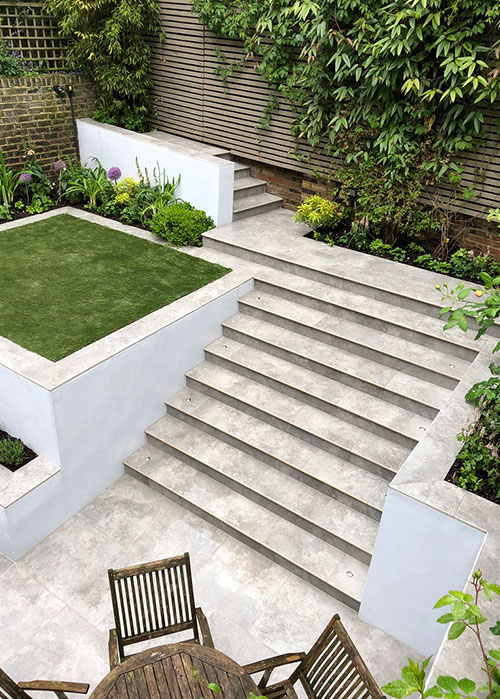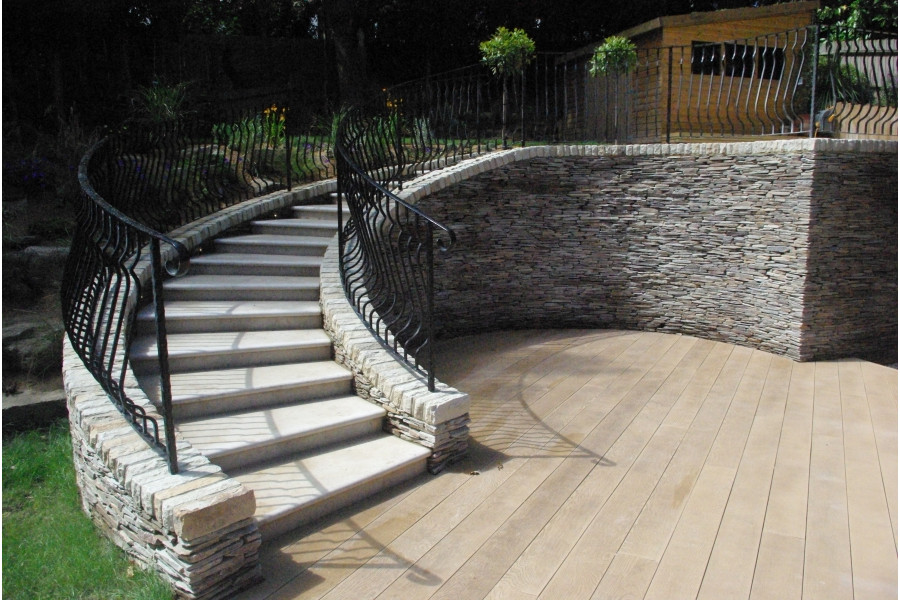A seemingly minor detail, edge profiles are an important part of a well thought-out design. Find out what styles are available, how they’re applied and why every step and coping stone needs one.
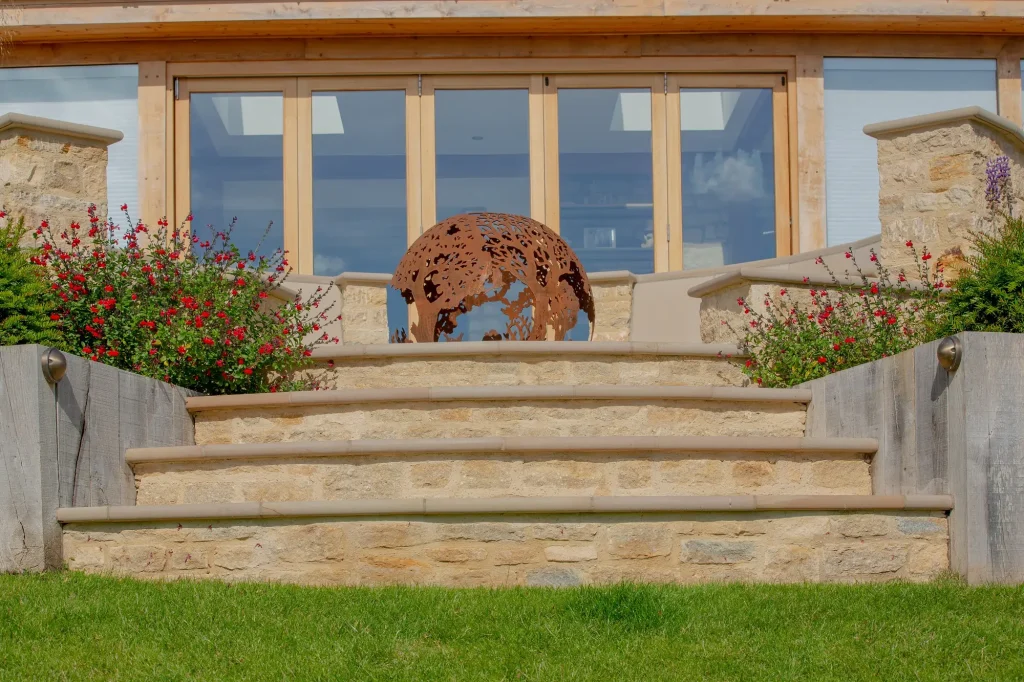
Why add an edge profile to steps and coping?
Edge profiles are everywhere. A bullnose edge is probably the most familiar—the rounded finish to the leading edge (or nosing) of steps that feature on Victorian town halls and public buildings across the UK.
You’ll also find them applied to coping stones, pool surrounds and pier caps. They are applied for three reasons.
- To improve the look of the edge.
- To help unite a design with a repeated detail that fits in with the rest of the project.
- To reduce damage. Freshly cut natural stone has a sharp edge that is fragile and liable to get chipped. Removing the sharp edge by profiling significantly reduces the chance of damage.
- To improve safety. A sharp, exposed edge could easily cut or injure somebody who is unfortunate enough to slip over on it.
- It can incorporate a drip groove to protect the masonry beneath.
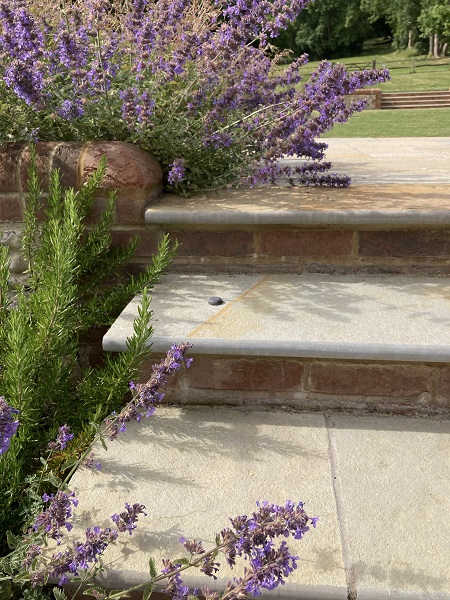
Natural stone edge profiles
At London Stone we supply bullnose steps to match every one of our sawn stone pavings, whether you choose sandstone, limestone, granite or one of the other natural stone options.
If you'd like a different look, don't forget that you can have any edge profile you desire applied with the help of our Bespoke Stone Centre.
Porcelain paving edge profiles
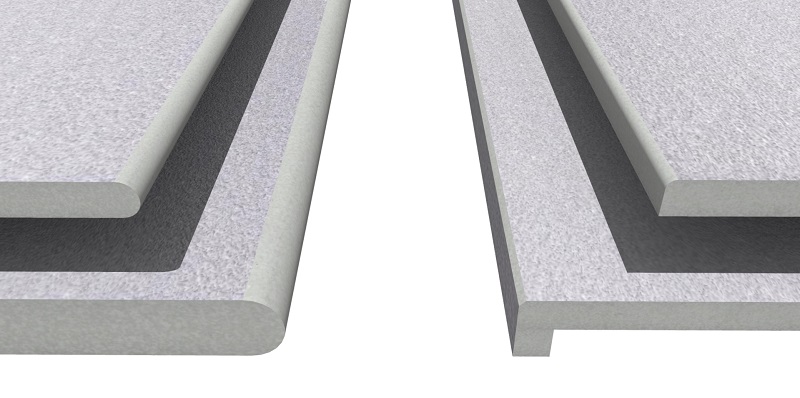
In porcelain, we supply the following five different profiles as standard, including two thicknesses of bullnose edge.
Bullnose 36mm
A classic and much-loved edge profile particularly well suited to traditional designs. Giving step treads and copings a smooth rounded finish, the bullnose elegantly adds shadow and contour. A drip groove is standard, as this prevents the bullnose’s curved underside leading water back to masonry or step riser below. Available as standard for all our natural stone pavings.
In porcelain, the 36mm bullnose edge is only available from London Stone. A useful design option, it creates a greater sense of weight, as it gives the impression of slabs that are twice their actual thickness.
Available as standard across all our porcelain paving ranges.
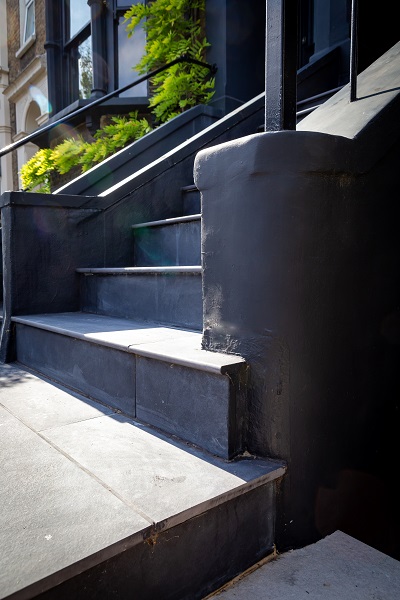
Bullnose 20mm
A slim version of the classic profile, this adds a smooth curve to porcelain, giving a classic reference to this modern material. Like the 40mm option, it will also cast shadow onto the riser beneath, creating a different feel, depending on weather and time of day.
Available as standard in all our porcelain paving ranges.
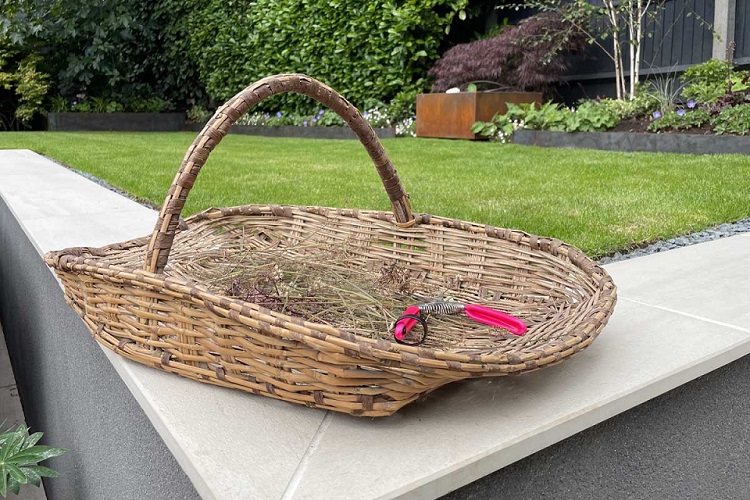
Chamfer
The simplest of edge profiles, a Chamfer simply removes the sharp edge of cut stone. It strengthens the corner of the material, minimising potential chipping. As the most economical option, it can be used in hidden areas or in places where an edge profile will not contribute to the overall design. Alternatively, the very simple outline can work well with minimalist, urban styling.
Available as standard in all our porcelain paving ranges.
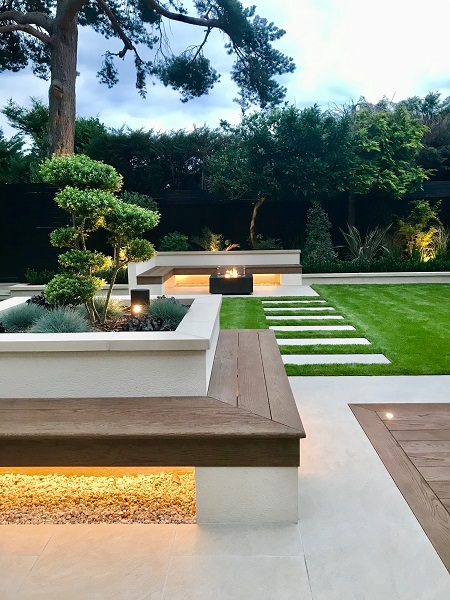
Downstand
The 40mm Downstand is available as standard for all our porcelain pavings. London Stone's experienced operatives were the first to manufacture these. Ideal for the contemporary appearance of porcelain, its crisp finish complements strong, modern linear design. Like the 40mm bullnose option, this creates the impression of slabs that are twice their actual 20mm thickness.
Available as standard in all our porcelain paving ranges.
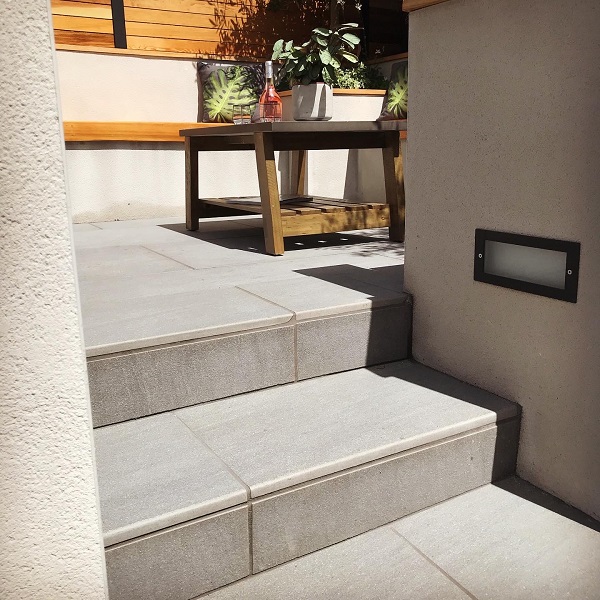
Pencil round
A simple, more contemporary edge profile, the Pencil Round—or pencil profile—is a great choice for an understated finish to copings and steps. The top edge of the tread or coping is rounded, creating a small radius about the width of a pencil. It’s a sleek, smooth finish, with the added safety benefit of removing the sharp edge of the stone.
When a darker stone, such as basalt, granite or slate is profiled, the edge tends to look paler than the rest of the slab, with visible saw marks. At this point, a polish is recommended, to remove the marks and deepen the colour.
Available as standard in all our porcelain paving ranges.
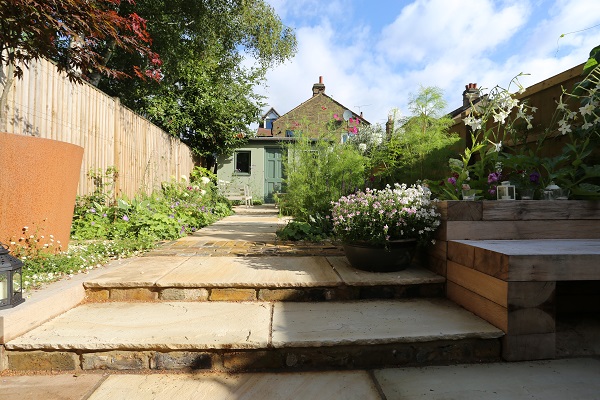
Rock-faced
Not produced in-house, the rock-face edge profile is hand-cut by our suppliers of Indian sandstone. It particularly suits the riven surface, and blends well with rustic and more traditional settings.
Creating bespoke edge profiles
If we don’t supply your preferred step profile as standard, it’s time for our Bespoke Stone Centre to step in. Chamfer, pencil round and polish, or half bullnose (where the curve is only on the upper edge) can all be supplied in natural stone. For coping to top the walls of period properties, there’s a choice of Edwardian, Victorian and Regency edge designs, ideal when you’re renovating old masonry.
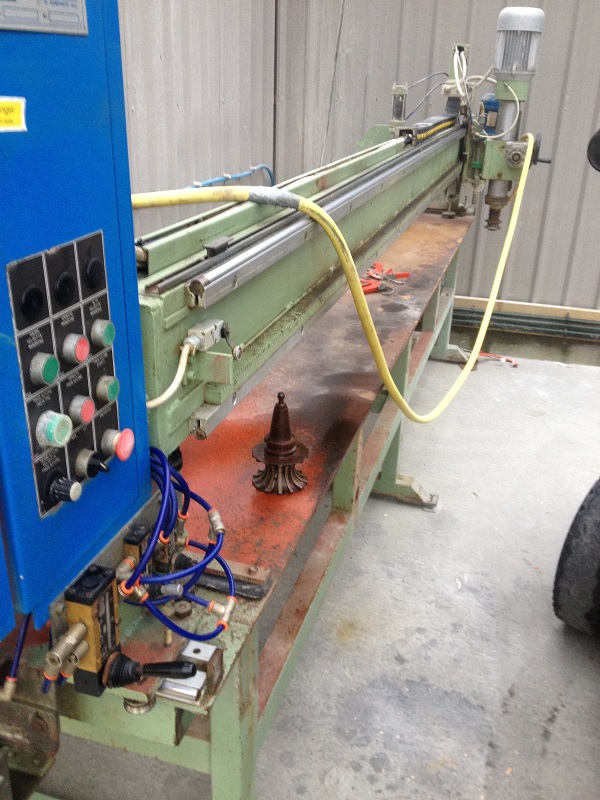
How edge profile are added to steps and coping
All of our porcelain edge profiles are done using our edge-profiling machine. The process could be done by hand but the hand process is not always consistent. If, for example, a client wanted coping for a straight wall, it would be essential that the edge profile was totally consistent, as any discrepancy would be clearly visible.
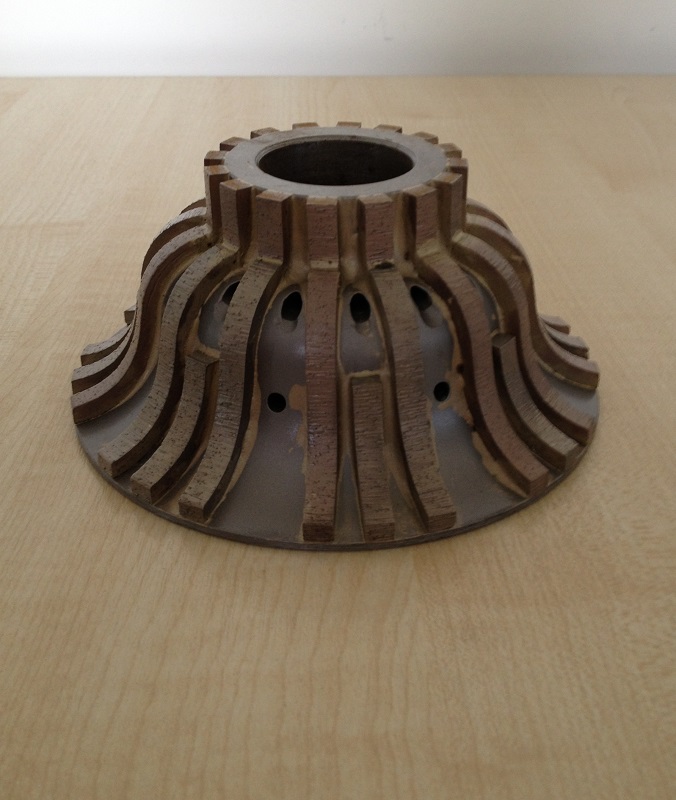
Prior to any edge profiles being added to stone, we hand-select paving of a consistent thickness. Occasionally we will need to calibrate natural paving, to ensure an even thickness. The stone will then be cut to the correct dimensions and fixed to the profiling machine with adjustable rubber heads.
We then select the specified edge profile - it could, for example, be bullnose, half bull nose, pencil round, chamfer, Victorian, Edwardian or Regency - and fix it to the head of the profiling machine. This runs along the length of the stone until the edge profile has been created on the stone with a consistent and precise finish.
View our range of step and copings, or find out more about our Bespoke Stone services. You can see steps and copings "in the flesh" by visiting one of our showrooms around the country.
Post updated: July 2023


/filters:quality(60)/mediadev/media/menu-pics/all-porcelain.jpg )
/filters:quality(60)/mediadev/media/menu-pics/luxury-italian.jpg )
/filters:quality(60)/mediadev/media/menu-pics/premium-italian.jpg )
/filters:quality(60)/mediadev/media/menu-pics/budget-porcelain.jpg )
/filters:quality(60)/mediadev/media/menu-pics/large-format-porcelain.jpg )
/filters:quality(60)/mediadev/media/menu-pics/wood-effect-porcelain.jpg )
/filters:quality(60)/mediadev/media/menu-pics/porcelain-planks.jpg )
/filters:quality(60)/mediadev/media/menu-pics/porcelain-setts.jpg )
/filters:quality(60)/mediadev/media/menu-pics/browse-all-paving.jpg )
/filters:quality(60)/mediadev/media/menu-pics/stone-paving.jpg )
/filters:quality(60)/mediadev/media/menu-pics/interior-tiles.jpg )
/filters:quality(60)/mediadev/media/menu-pics/stone-effect-porcelain.png )
/filters:quality(60)/mediadev/media/menu-pics/wood-effect-porcelain.png )
/filters:quality(60)/mediadev/media/menu-pics/grey-porcelain.png )
/filters:quality(60)/mediadev/media/menu-pics/beige-porcelain.png )
/filters:quality(60)/mediadev/media/menu-pics/dark-porcelain.png )
/filters:quality(60)/mediadev/media/menu-pics/light-porcelain.png )
/filters:quality(60)/mediadev/media/menu-pics/patio-grout.jpg)
/filters:quality(60)/mediadev/media/menu-pics/primers.jpg)
/filters:quality(60)/mediadev/media/menu-pics/porcelain-blades.jpg)
/filters:quality(90)/mediadev/media/menu-pics/drainage.jpg)
/filters:quality(60)/mediadev/media/menu-pics/cleaners.jpg)
/filters:quality(60)/mediadev/media/menu-pics/all-stone-paving.jpg )
/filters:quality(60)/mediadev/media/menu-pics/all-sawn-paving.jpg )
/filters:quality(60)/mediadev/media/menu-pics/all-riven-paving.jpg )
/filters:quality(60)/mediadev/media/menu-pics/indian-sandstone.jpg )
/filters:quality(60)/mediadev/media/menu-pics/limestone-paving.jpg )
/filters:quality(60)/mediadev/media/menu-pics/granite-paving.jpg )
/filters:quality(60)/mediadev/media/menu-pics/slate-paving.jpg )
/filters:quality(60)/mediadev/media/menu-pics/yorkstone-paving.jpg )
/filters:quality(60)/mediadev/media/menu-pics/stone-pavers.jpg )
/filters:quality(60)/mediadev/media/menu-pics/cobbles-setts.jpg )
/filters:quality(60)/mediadev/media/menu-pics/plank-paving.jpg )
/filters:quality(60)/mediadev/media/menu-pics/paving-circles.jpg )
/filters:quality(60)/mediadev/media/menu-pics/bespoke-paving-1.jpg )
/filters:quality(60)/mediadev/media/menu-pics/edging-stones-1.jpg )
/filters:quality(60)/mediadev/media/menu-pics/prestige-stone.jpg )
/filters:quality(60)/mediadev/media/menu-pics/grey-blue-stone.png)
/filters:quality(60)/mediadev/media/menu-pics/swatch-black-dark.jpg )
/filters:quality(60)/mediadev/media/menu-pics/swatch-buff-beige-white.jpg )
/filters:quality(60)/mediadev/media/menu-pics/sealants.jpg)
/filters:quality(60)/mediadev/media/menu-pics/all-clay-paving.jpg )
/filters:quality(60)/mediadev/media/menu-pics/alpha-clay-pavers.jpg )
/filters:quality(60)/mediadev/media/menu-pics/cottage-garden-clay-pavers.jpg )
/filters:quality(60)/mediadev/media/menu-pics/kessel-garden-clay-pavers.jpg )
/filters:quality(60)/mediadev/media/menu-pics/artisan-clay-pavers.jpg )
/filters:quality(60)/mediadev/media/menu-pics/grey-blue-clay-paver.png )
/filters:quality(60)/mediadev/media/menu-pics/red-brown-clay-pavers.png )
/filters:quality(60)/mediadev/media/menu-pics/beige-buff-clay-pavers.png )
/filters:quality(60)/mediadev/media/menu-pics/composite-decking.jpg )
/filters:quality(60)/mediadev/media/menu-pics/designboard-decking.jpg )
/filters:quality(60)/mediadev/media/menu-pics/classic-designboard.jpg )
/filters:quality(60)/mediadev/media/menu-pics/brushed-designboard.jpg )
/filters:quality(60)/mediadev/media/menu-pics/grooved-designboard.jpg )
/filters:quality(60)/mediadev/media/menu-pics/millboard-decking.jpg )
/filters:quality(60)/mediadev/media/menu-pics/grey-decking.jpg )
/filters:quality(60)/mediadev/media/menu-pics/black-charcoal-decking.jpg)
/filters:quality(60)/mediadev/media/menu-pics/brown-decking.jpg)
/filters:quality(60)/mediadev/media/menu-pics/all-build-deck.png )
/filters:quality(60)/mediadev/media/menu-pics/stone-cladding.jpg )
/filters:quality(60)/mediadev/media/menu-pics/all-garden-walling-1.jpg )
/filters:quality(60)/mediadev/media/menu-pics/facing-bricks.jpg )
/filters:quality(60)/mediadev/media/menu-pics/garden-screening.jpg )
/filters:quality(60)/mediadev/media/menu-pics/all-steps-coping.jpg )
/filters:quality(60)/mediadev/media/menu-pics/stone-garden-steps.jpg )
/filters:quality(60)/mediadev/media/menu-pics/sawn-steps.jpg )
/filters:quality(60)/mediadev/media/menu-pics/riven-steps.jpg )
/filters:quality(60)/mediadev/media/menu-pics/yorkstone-steps.jpg )
/filters:quality(60)/mediadev/media/menu-pics/bespoke-steps.jpg )
/filters:quality(60)/mediadev/media/menu-pics/porcelain-steps.jpg )
/filters:quality(60)/mediadev/media/menu-pics/off-the-shelf.jpg )
/filters:quality(60)/mediadev/media/menu-pics/stone-coping.jpg )
/filters:quality(60)/mediadev/media/menu-pics/sawn-coping.jpg )
/filters:quality(60)/mediadev/media/menu-pics/riven-coping.jpg )
/filters:quality(60)/mediadev/media/menu-pics/yorkstone-coping.jpg )
/filters:quality(60)/mediadev/media/menu-pics/bespoke-coping.jpg )
/filters:quality(60)/mediadev/media/menu-pics/stone-pier-caps.jpg )
/filters:quality(60)/mediadev/media/menu-pics/porcelain-coping.jpg )
/filters:quality(60)/mediadev/media/menu-pics/all-bespoke-services.jpg )
/filters:quality(60)/mediadev/media/menu-pics/bespoke-paving-2.jpg )
/filters:quality(60)/mediadev/media/menu-pics/bespoke-steps-1.jpg )
/filters:quality(60)/mediadev/media/menu-pics/bespoke-coping-1.jpg )
/filters:quality(60)/mediadev/media/menu-pics/edge-profiles.jpg )
/filters:quality(60)/mediadev/media/menu-pics/masonry-services.jpg )
/filters:quality(60)/mediadev/media/menu-pics/deluxe-pergolas.jpg )
/filters:quality(60)/mediadev/media/menu-pics/proteus-pergolas.jpg )


